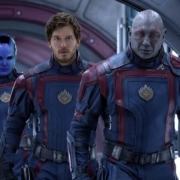Leaders: Are You Holding Onto Any Sacred Cows?
By: Michael McQueen
Every sacred cow was once an innovation.
One day someone discovers a new technique that offers greater efficiency, it is implemented, considered best practice and its use is mandated and monitored across the organisation. It is then taught in in induction and training programs, but without the new staff being taught why it was originally developed. Before long, what was once an innovative idea is a stale habit and any efforts to challenge or change it are met with active resistance. The innovation has become a sacred cow.
Defined as ‘an outmoded practice, policy, system, or strategy’, sacred cows have a unique ability to inhibit change and prevent responsiveness to new opportunities.[1]
‘Once managers find a process that works well enough, they usually stop experimentation and commit to what works’, explains Donald Sull in his book Why Good Companies Go Bad.[2]
Any business or organisation committed to navigating disruption must be equally committed to sparing no sacred cows. As times change, we must change with them. An unwillingness to dispense with vestiges of the past will quickly set you on a collision course with irrelevance.
In the words of former CEO of GE Jack Welch: ‘When the rate of change on the outside exceeds the rate of change on the inside, the end is near.’ Never were truer words spoken.
Which Traditions to Keep, and Which to Chuck?
Naturally, not all traditions are bad and not all historical processes are dysfunctional. The challenge then is to determine which traditions are sacred cows and which are merely vestiges of the past that may be harmless or a positive expression of heritage.
Leading business author Robert Kriegel offers three helpful diagnostic questions to determine whether a tradition is dysfunctional or not. Does it:
- add value to the customer?
- increase productivity?
- improve organisational morale?
If a given tradition or ritual doesn’t result in a ‘yes’ answer to at least two of these questions, it is in all likelihood a dysfunctional process that must be dealt with if you hope to remain at the cutting edge. For an organisation to progress, its members need to be willing to prune away the systems, habits and ideas that are inhibiting its growth.
Of all the companies I have studied over the years, Lego stands out as a powerful example of a business that has thrived and remained relevant by addressing sacred cows.
The Lego Crisis
The early years of the twenty-first century were a dark time for Lego. Having been rocked by the steady rise in popularity of video games in the preceding decade, the Danish toymaker was in a fight for survival and relevance in the digital age. By the end of 2003, Lego’s sales had plunged by 30% in one year. Worse still, the company had racked up $800 million in debt and was teetering on the edge of bankruptcy.[3]
Amidst this crisis, a new Lego CEO by the name of Jorgen Knudstorp was appointed in 2004. Knudstorp quickly identified that Lego needed to significantly streamline and simplify their product range and production processes. Knudstorp set about returning Lego to its range of core products and significantly reduced the complexity involved in manufacturing — reducing the number of components in Lego’s product portfolio by a full 50%.[4]
The results were almost immediate. By the end of 2005, Lego rebounded from a $292 million loss the previous year to a pre-tax profit of $117 million. That same year, the company would post sales of $1.2 billion but, more importantly, profitability would more than triple.[5]
In addition to dispensing with outmoded products and dysfunctional processes, there were a range of outdated mindsets in the Lego business that needed addressing too.
One of these centred on the culture of closed-system design. Despite historically guarding their IP and readily suing any Lego users who infringed on it, in 2008 Lego adopted a radical new approach to product design with the launch of Lego Ideas.
They developed a crowdsourcing site which saw Lego fans accredited to use Lego’s IP and submit ideas for new inventions that they could earn royalties off, should the concept make it into production.
Change in Direction Isn’t Easy
David Gram, head of marketing at Lego’s Future Lab, admits that this change in direction ruffled a lot of feathers:
“When we started up our crowdsourcing site, there was complete resistance in the company. Nobody wanted an external platform. No, we have our designers, they know better. We don’t want to show our competitors what we are doing, so it was a no, no.”[6]
And yet the company persisted with the new direction and it began to work. In the years since the launch of Lego Ideas, a raft of new innovations, including a Lego Minecraft range, a Beatles-themed Yellow Submarine toy set, and Lego series inspired by NASA’s brightest female stars over the years, have come to market.
Lego’s recovery, in the space of just over a decade, was nothing short of breathtaking. Having addressed a long list of processes, mindsets and initiatives that had been holding the company back, in September 2014 Lego overtook Mattel as the world’s biggest toymaker — an enormous accomplishment by any measure. Less than a year later, Lego was named the world’s most powerful brand and was voted the most popular toy of all time.
While human nature dictates we will gravitate toward the predictable and familiar, the goal of maintaining relevance requires us to resist every urge to get stuck in patterns and routines from the past. Smart leaders know that in turbulent and disruptive times, no sacred cow can be spared. Vestiges of the past that may have served you well yesterday will likely prove to be a shackle tomorrow.
[1] Kriegel, R. & Brandt, D. 1997, Sacred Cows Make the Best Burgers, Time Warner, New York, p. 1. [2] Sull, D. 2003, Why Good Companies Go Bad, Harvard Business School, pp. 25–29, 35. [3] Robertson, D. 2014, Brick by Brick, Random House, New York, pp. 70, 98. [4] Robertson, D. 2014, Brick by Brick, Random House, New York, p. 114. [5] Robertson, D. 2014, Brick by Brick, Random House, New York, p. 216. [6] Durkin, P. 2015, ‘How Brick-Headed Consultants Almost Killed Lego, And It Rebuilt To Be 2015’s Most Powerful Brand’, The Australian Financial Review, 13 October.
Article supplied with thanks to Michael McQueen.
About the Author: Michael is a trends forecaster, business strategist and award-winning conference speaker.
Feature image: Photo by Alessandro La Becca on Unsplash











